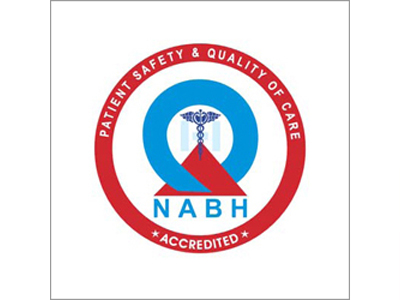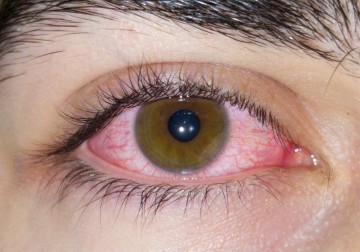In a new study from LVPEI, Drs. Amrita Mohanty, Bhupesh Bagga, Joveeta Joseph, and Mr. Ahmad A. Pasha describe a case series of severe microbial keratitis in patients with conjunctivitis after using topical corticosteroid–antibiotic combination eye drops.
Conjunctivitis (pink eye) is a common, highly contagious eye disease, especially during the rainy season. In a person with a pink eye, the conjunctiva (the transparent protective membrane that lines the eyelid and eyeball) gets inflamed, appearing red and swollen. Most conjunctivitis is viral and caused by adenoviruses, but it can also be triggered by bacteria or allergic reactions to animal hair, chemicals, and seasonal allergens like pollen. In most cases, the pink eye resolves on its own in a week or two. Yet, people may resort to unsupervised use of steroid-based eye drops, leading to vision-threatening complications.
Misuse of eye drops containing a combination of topical corticosteroids and antibiotics can lead to serious complications. Topical antibiotics, meant to tackle bacterial infections, are ineffective in viral conjunctivitis and their frequent usage fuels antibiotic resistance. Corticosteroids are used to reduce inflammation, but it does so via localized immunosuppression. Reduced immunity in the eyes and the ineffectiveness of topical antibiotics can lead to microbial keratitis (MK)–a sight-threatening bacterial or fungal infection of the cornea. MK manifests as an opaque white patch on the cornea (corneal infiltrate) consisting of inflammatory cells. Severe MK can cause an open sore on the cornea (a corneal ulcer) followed by the accumulation of pus in the eye (hypopyon). MK requires a thorough ophthalmological evaluation and swift medical intervention, without which the patient risks going blind. We lack surveillance networks to monitor pink eye outbreaks in the population, and absence of structured preventive and treatment guidelines raises the likelihood of misusing over-the-counter pharmaceutical eye drops during an outbreak.
In a letter published in the Indian Journal of Ophthalmology, Drs. Amrita Mohanty, Bhupesh Bagga, Joveeta Joseph, and Mr. Ahmad A. Pasha describe a cluster of seven cases in which patients with conjunctivitis developed severe MK within 10 days of unsupervised use of topical corticosteroid–antibiotic combination eye drops. The patients (4 male, 3 female) were diagnosed with conjunctivitis between July–August 2023, during a conjunctivitis outbreak in India. The patients were diagnosed with conjunctivitis elsewhere and were prescribed corticosteroid–antibiotic eye drops every 2–4 hours per day. Five out of seven patients had conjunctivitis in both eyes, with the more severely affected eye developing MK.
All cases had a large corneal infiltrate (4.5–8.8 mm), 43% had a deeper stromal location (the middle layer of the cornea). Four patients (57%) either had hypopyon and corneal perforation, and 86% could only see counting fingers close to the face at presentation. Microbiological evaluation showed that all MK cases were fungal keratitis caused by various species such as Fusarium sp, Cryptococcus laurentti, Aspergillus flavus, etc. Five patients (71%) required surgery. Among them, three were advised corneal tissue adhesives—a patch of tissue used to seal corneal holes—and therapeutic penetrating keratoplasty (TPK), a corneal transplant. One patient required TPK alone. The remaining two patients (29%) were managed using topical and oral antifungal medication. The letter underscores the need for a thorough evaluation of any cause of a red eye and risks associated with misuse of topical corticosteroids for conjunctivitis.
'Every 'red eye' is not conjunctivitis, and every conjunctivitis does not require antibiotics or steroids,’ emphasizes Dr. Amrita Mohanty, consultant ophthalmologist at LVPEI and the first author of this letter. ‘Clinicians need to be cautious before prescribing patients with combination eye drops when they visit them complaining of conjunctivitis, just as patients need to desist from misusing OTC combination eye drops.'
Citation
Mohanty, A., Joseph, J., Pasha, A. A., & Bagga, B. (2024). Cluster cases of severe microbial keratitis following unsupervised usage of corticosteroid-antibiotic combination for the recent conjunctivitis outbreak in India. Indian Journal of Ophthalmology, 72(4), 609–611. https://doi.org/10.4103/IJO.IJO_2448_23
Photo credit: ‘Infected eye’, by Hızır Erdem Uygun, CC BY 4.0.



